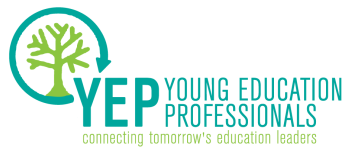Much of the night’s conversation centered on the experiences of the panelists, both as classroom teachers and as service providers. While everyone generally agreed that community-school partnerships can be very beneficial for students and staff, the panelists focused on the intricacies of building and sustaining effective partnerships. Good partnerships are a two-way street, where both the school and the external organization take responsibility for the work and commit to each other. To do so, the panelists emphasized the importance of mission alignment and strong communication between partners and schools.
There are many youth-serving organizations in D.C. with good intentions and a true desire to help students succeed; however, the desire to do good is not always enough to make a partnership work. By and large, Tuesday night’s panelists agreed that organizations need to think strategically about aligning their missions with their partner school’s and that they should design their programs to help advance the school’s objectives. For there to be real buy-in from the school, organizations should be upfront about their value-add and be willing to integrate themselves into the school community, even if it means working with other school-based service providers to be more strategic about program implementation.
This type of ground-level collaboration is happening at Cesar Chavez Public Charter School Parkside campus right now between Higher Achievement and another school-based organization called City Year. Both groups operate at Parkside; City Year during the school day and Higher Achievement after school. By working together, the two organizations are able to provide all-day support to Chavez students. City Year corps members provide targeted, in-class interventions for students during the day and can share information with both teachers and Higher Achievement staff about where students are excelling and where they might need extra support. Higher Achievement can then adjust its own programming to align with what is happening in the classroom and target its interventions to better support student learning and growth. Not only does this collaboration help Higher Achievement and City Year deepen their own impact, but it also directly supports Chavez’s broader goals around improving student academic outcomes.
Mission alignment between partners and schools is vital, but so is clear and consistent communication. For Reading Partners, a similar organization partnering with D.C.-area schools, communication with school faculty and administrators is especially important because the program pulls students from their regular classroom work to receive targeted reading interventions. Asking teachers to give up instructional time is a big request and would likely be met with concern if the Reading Partners team didn’t effectively communicate with teachers about the purpose of the intervention. To this end, Reading Partners places AmeriCorps service members at schools to build relationships, communicate with teachers and staff, and secure buy-in from the school. By taking the time to build relationships and lay a foundation for consistent communication, Reading Partners has been able to maximize its impact in partner schools.
The Cesar Chavez Public Charter School network also depends on good communication in its work with over 150 partners that each support students through externships, professional coaching, and mentoring. Keeping partners engaged and well-informed is critical to the success of the program. To manage this work, Ms. Joan Massey, CEO of the Cesar Chavez network, has created multiple staff roles to focus on these partnerships exclusively. For her, the value-add of having these partners work with her students is worth the additional time and cost it takes to effectively manage the relationships.
YEP-DC’s panel discussion was a great opportunity to hear from practitioners in the field who do this work on a daily basis. As more schools look to community partners to supplement classroom learning and provide additional supports to students, it is critical that they understand the time and effort good partnerships take. Ms. Massey encouraged schools to be picky when choosing partners, ensuring that there is strong mission alignment before considering a collaboration. Ms. Callender and Ms. Green agreed; pushing community organizations to be clear on their own missions and value adds before embarking on new partnerships.
Abigail Cohen is an associate at the Data Quality Campaign.

 RSS Feed
RSS Feed